The following is a historical speech by St. Gregory of Decapolis about a vision that a Saracen [Muslim] once had in the Church of St. George in Damascus, and who, as a result of this, believed and became a monk and then a martyr for our Lord Jesus Christ. This took place in the eighth century.
Nicholas, the strategos, called Joulas, has related to me that in his town, which the Saracens call in their language “Vineyard”, the Emir of Syria sent his nephew to administer some works under construction in the said castle. In that place there is also a big church, old and splendid, dedicated to the most glorious martyr St. George. When the Saracen saw the church from a distance he ordered his servants to bring his belongings and the camels themselves, twelve of them, inside the church so that he may be able to supervise them from a high place as they were fed.
As for the priests of that venerable church, they pleaded with him saying: “Master, do not do such things; this is a church of God. Do not show disrespect towards it and do not bring the camels inside the holy altar of God.” But the Saracen, who was pitiless and stubborn, did not want even to listen to the pleas of the presbyters. Instead he said to his servants, in Arabic: “Do you not do what you have been commanded to do?” Immediately his servants did as he commanded them. But suddenly the camels, as they were led into the church, all, by the command of God, fell down dead. When the Saracen saw the extraordinary miracle he became ecstatic and ordered his servants to take away the dead camels and throw them away from the church; and they did so.
As it was a holiday on that day and the time for the Divine Liturgy was approaching, the priest who was to start the holy service of preparation of the gifts was very much afraid of the Saracen; how could he start the bloodless sacrifice in front of him! Another priest, co-communicant to him, said to the priest who was to celebrate the Liturgy: “Do not be afraid. Did you not see the extraordinary miracle? Why are you hesitant?” Thus the said priest, without fear started the holy service of offering.
The Saracen noticed all these and waited to see what the priest was going to do. The priest began the holy service of offering and took the loaf of bread to prepare the holy sacrifice. But the Saracen saw that the priest took in his hand a child which he slaughtered, drained the blood inside the cup, cut the body into pieces, and placed them on the tray!
As the Saracen saw these things he became furious with anger and, enraged at the priest, he wanted to kill him. When the time of the Great Entrance approached, the Saracen saw again, and more manifestly, the child cut into four pieces on the tray, his blood in the cup. He became again ecstatic with rage. Towards the end of the Divine Liturgy, as some of the Christians wanted to receive the Holy Communion and as the priest said, “With the fear of God and faith draw near,” all the Christians bent their heads in reverence. Some of them went forward to receive the holy sacrament. Again, for a third time, the Saracen saw that the priest, with a spoon, was offering to the communicants from the body and the blood of the child. The repentant Christians received the holy sacrament. But the Saracen saw that they had received communion from the body and the blood of the child, and at that he became filled with anger and rage against everybody.
At the end of the Divine Liturgy the priest distributed the antidoron to all Christians. He then took off his priestly vestments and offered to the Saracen a piece from the bread. But he said in Arabic: “What is this?” The priest answered: “Master, it is from the bread from which we celebrated the Liturgy.” And the Saracen said angrily: “Did you celebrate the Liturgy from that, you dog, impure, dirty, and killer? Didn’t I see that you took and slaughtered a child, and that you poured his blood into the cup, and mutilated his body and placed on the plate members of his, here and there? Didn’t I see all these, you polluted one and killer? Didn’t I see you eating and drinking from the body and blood of the child, and that you even offered the same to the attendants? They now have in their mouths pieces of flesh dripping blood.”
And the Saracen said: “Is this not what I saw?” And the priest: “Yes, my Lord, this is how it is; but myself, being a sinner, I am not able to see such a mystery, but only bread and wine as a figuration of the body and blood of our Lord Jesus Christ. Thus, even the great and marvelous Fathers, the stars and teachers of the Church, like the divine Basil the Great, and the memorable Chrysostom and Gregory the Theologian, were unable to see this awesome and terrifying mystery. How can I see it?”
When the Saracen heard this he became ecstatic and he ordered his servants and everybody who was inside to leave the church. He then took the priest by the hand and said: “As I see and as I have heard, great is the faith of the Christians. So, if you so will, Father, baptize me. And the priest said to the Saracen: “Master, we believe in and we confess our Lord Jesus Christ, the Son of God, who came to the world for our salvation. We also believe in the Holy Trinity, the consubstantial and undivided one, Father, Son, and Holy Spirit, the one Godhead. We believe also in Mary, the ever-virgin mother of light, who has given birth to the fruit of life, our pre-announced Lord, Jesus Christ. She was virgin before, virgin during, and virgin after giving birth. We believe also that all the holy apostles, prophets, martyrs, saints, and righteous men are servants of God. Do you not realize, therefore, my master, that the greatest faith is that of the Orthodox Christians?”
And the Saracen said again: “I beg you, Father, baptize me.” But the priest answered: “Far from that. I cannot do such a thing; for if I do and your nephew the Emir hears of that, he will kill me and destroy this church, too. But if it is, indeed, your wish to be baptized, go to that place in the Sinai Mountain. There, there is the bishop; he will baptize you.”
The Saracen prostrated himself in front of the presbyter and walked out of the church. Then, one hour after nightfall, he came back to the priest, took off his royal golden clothes, put on a poor sack of wool, and he left in secret by night. He walked to Mount Sinai and there he received holy baptism from the bishop. He also learned the Psalter, and he recited verses from it every day.
One day three years later he [the former Saracen] said to the bishop: “Forgive me, Master, what am I supposed to do in order to see Christ?” And the bishop said: “Pray with the right faith and one of these days you will see Christ, according to your wish.” But the former Saracen said again: “Master, give me your consent to go to the priest who offered me instruction when I saw the awesome vision in the church of the most glorious martyr George.” The bishop said: “Go, in peace.”
Thus, he went to the priest, prostrated himself in front of him, embraced him and said to him: “Do you know, Father, who I am?” And the priest: “How can I recognize a man whom I have never seen before?” But, again, the former Saracen said: “Am I not the nephew of the Emir, who brought the camels inside the church and they all died, and who during the Divine Liturgy saw that terrifying vision?” When the priest looked at him he was amazed and praised God seeing that the former Arab wolf had become a most calm sheep of Christ. He embraced him with passion and invited him to his cell to eat bread.
And the former Saracen said: “Forgive me, Master and Father, but I want and have a desire to see Christ. How can I do that?” And the priest said: “If you wish to see Christ go to your nephew and preach Christ to him. Curse and anathematize the faith of the Saracens and their false prophet Muhammad and preach correctly the true faith of the Christians without fear, and thus you will see Christ.”
The former Saracen left in earnest. By night he was knocking at the door of the Saracen forcefully. The guards at the gate of the house of the Emir asked: “Who is yelling and knocking at the door?” And he answered: “I am the nephew of the Emir who left some time ago and was lost. Now I want to see my uncle and tell him something.” The guards of the gate conveyed this to the Saracen immediately: “Master, it is your nephew who left some time ago and was lost.” The Emir, heaving a sigh, said: “Where is he?” They said: “At the gate of the palace.” He then ordered his servants to go and meet him with lights and candles. They all did as the king, Emir, commanded and they took the monk, the former Saracen, by the hand and presented him to the Emir, his uncle.
When the Emir saw him, he was very glad. He embraced him with tears in his eyes and said to him: “What is this? Where were you living all this time? Aren’t you my nephew?” And the monk said: “Don’t you recognize me, your nephew? Now, as you see, by the Grace of God the Most High I have become a Christian and a monk. I have been living in desert places so that I may inherit the Kingdom of Heaven. I hope in the unspeakable compassion of the All-sovereign God to inherit his kingdom. Why are you hesitating yourself, too, Emir? Receive the holy baptism of the Orthodox Christians in order to inherit eternal life, as I hope to do.”
The Emir laughed, scratched his head and said: “What are you chattering about, you miserable one; what are you chattering? What has happened to you? Alas, you pitiful one! How did you abandon your life and the sceptres of reign and roam around as a beggar, dressed in these filthy clothes made of hair?”
The monk responded to him: “By the grace of God. As far as all the things I used to have when I was a Saracen, these were [material] property and were of the devil. But these things that you see me wearing are a glory and pride, and an engagement with the future and eternal life. I anathematize the religion of the Saracens and their false prophet.”
Then the Emir said: “Take him out, for he does not know what he is chattering about.” They took him away and put him in a place in the palace where they gave him food and drink. And he spent three days there, but he took neither food nor drink. He was praying to God earnestly and with faith. Going down to his knees he said: “O Lord, I have hoped in thee, let me never be ashamed, neither let my enemies laugh me to scorn.” And again: “Have mercy on me, O God, according to thy steadfast love; according to thy abundant mercy blot out my transgressions.” And again: “Enlighten my eyes, Lord God, that I may not fall asleep into death; that my enemy may never say, ‘I have overpowered him’. ‘Strengthen my heart, O Lord,’ so that I may be able to fight the visible deceiver, the Saracen; so that the evil devil may not stamp on me and make me fear death, for your holy name.” He then made the sign of the cross and said: “The Lord is my enlightenment and my saviour. Whom shall I fear? The Lord is the protector of my life. From whom will I hesitate?” And again he cried out to the Emir: “Receive holy baptism in order to gain the immeasurable kingdom of God.”
Again the Emir gave orders for him to be brought in front of him. He had prepared for him clothes exceedingly beautiful. And the Emir spoke: “Enjoy, you pitiful one, enjoy and rejoice for being a king. Do not disdain your life and your youth which is so beautiful, walking instead mindlessly like a beggar and a penniless one. Alas, you pitiful one. What do you think?”
The monk laughed and replied to the Emir: “Do not weep at what I have in mind. I am thinking how to be able to fulfill the work of my Christ and that of the priest who has sent me, and has been my teacher. As for the clothes you have prepared for me, sell them and give the money to the poor. You, too, should abandon the temporary sceptres of the reign, so that you may receive sceptres of an eternal life. Do not rest your hope on things of the present but on things which are of the future, and do not believe in the pseudo-prophet Muhammad, the impure, the detestable one, the son of hell. Believe, rather, in Jesus Christ of Nazareth, the crucified one. Believe that the one Godhead is a consubstantial Trinity; Father, Son, and Holy Spirit, a Trinity of one essence, and undivided.”
The Emir laughed again and said to the officials who had gathered in the palace: “This man is mindless. What shall we do with him? Take him out and expel him.” Those, however, sitting by the king said: “He meant to desecrate and corrupt the religion of the Saracens. Do you not hear how he curses and anathematizes our great prophet?”
The monk and former Saracen cried out loudly: “I feel sorry for you Emir because you, unfortunate one, do not want to be saved. Believe in our Lord Jesus Christ, the crucified one, and anathematize the religion of the Saracens and their false prophet, as I did.”
And the Saracen Emir said: “Take him out as I am ordering you. He is mindless and does not know what he is talking about.”
Those sitting by with him said: “Well, you heard that he anathematized the religion of the Saracens and that he is blaspheming against the great prophet, and you say, ‘He does not know what he is talking about’? If you do not have him killed we will also go and become Christians.”
And the Emir said: “I cannot have him killed because he is my nephew and I feel sorry for him. But you take him and do as you please.”
And they got hold of the monk with great anger, they dragged him out of the palace and submitted him to many tortures to try to make him return to the previous religion of the Saracens. But he did not. Instead he was teaching everybody in the name of Jesus Christ of Nazareth to believe and be saved.
The Saracens dragged him out of the city, and there they stoned to death this most pious monk, whose name was Pachomios.
On that night a star came down from heaven and rested on top of the most pious martyr, and everybody was able to see it for forty days; and many of them became believers.
With the prayers of the most blessed martyr, of the all-pure Mother of God Mary, who is ever-virgin, and of all of the saints; for the remission of our sins. Amen.
From Daniel J. Sahas, “What an Infidel Saw that a Faithful Did Not: Gregory Dekapolites (d. 842) and Islam”, Greek Orthodox Theological Review 31 (1986), 47-67.
The Monastery of St. George Koudounas
Although Orthodox Christians have endured much suffering at the hands of the Turks, there are many people in Turkey born to Muslim families who nevertheless respect and venerate St. George, and pray to him for help. Here is an article from the website of the St. George Church in Prescott, California describing this veneration.
This historic Monastery of Saint George Koudounas, on Prince’s Island outside of Constantinople, was according to tradition built by the Byzantine Emperor Nikephoros Phokas in 963 AD. A miraculous icon of St. George was brought here from the Monastery of Peace, which was founded by Emperor Justin II, in Athens at that time.
The Monastery was later sacked in the Fourth Crusade. Then in 1302 the pirate Giustiniani plundered all the buildings and monasteries of the island. Not wanting their holy icon stolen by the Franks, the monks hid the icon under the earth and place the holy altar above it. The miraculous icon however was lost for many years.
Later, St. George appeared to a shepherd in a dream and told him where to find his icon. When he approached the area, he heard the ringing of bells, and having unearthed the icon, found it decorated with bells. This is the source behind the epithet “Koudouna” which means “bells”.
The Monastery was later attached to Hagia Lavra in Kalavryta, and eventually to the Patriarch of Constantinople.
The current church was built in 1905.
The miracles of the Saint are many, not only towards Christians [Romans], who approached always with great reverence (in olden times there wasn’t a Christian family which had not visited Koudouna at least once a year), but towards everyone without exception, who approach his grace with faith. Thus there is a great mass of people who come from other faiths from throughout Turkey. The pilgrims number about 250,000 a year, the majority being Muslim Turks.
The great iron gate of the Monastery, as we learn from its engraving in Greek and Turkish, was offered from the Muslim Rasoul Efenti, as a gift of gratitude towards the Saint for the healing of his wife.
On April 23rd, in other words the day when the Saint is honored and the Monastery celebrates, tens of thousands of pilgrims arrive, not only from Constantinople but from other cities, to venerate the Great Martyr and to seek help in their problems.
Roughly all of these pilgrims are from other faiths.
Many will return later to thank St. George, who heard their prayer and granted their desire, bringing the indispensable oil for his vigil lamp. You hear with passion how he healed this person’s son, how another became a mother after being barren for many years, how a third acquired a house, etc.
The Monastery also celebrates on the feast of Saint Thekla, and on this feast about 10,000 Muslims visit the Monastery seeking the prayer of Saint George.
Muslim Vows
Some come barefoot up the hill, which takes about 30 minutes to climb to the Monastery, others come with offerings of oil, candles, and sugar so that their lives may be sweet. Some do not speak as they climb up to the Monastery until they kiss the icon of St. George. They follow the services with hands lifted in the air holding lit candles. They ask priests for antidoron to bring home with them for a blessing. They have great faith and respect for Orthodoxy.
On September 24 I witnessed at 6:00 AM four modern looking Turkish girls approaching the Monastery. I asked them for what purpose they came. They responded: “Faith in the Saint brought us here. It doesn’t matter that we are Muslims. We prayed that he would help us. We have heard so much about the Monastery.”
Oral came from Smyrna in order to venerate the Saint with her vow. She brought three bottles of oil. When I asked why she, as a Muslim woman among the thousands, visits the Orthodox Monastery, she responded: “It is not forbidden by anyone for us to believe in Saint George. Religions have one common agreement, the one and only God. We could be hiding within us a Christian.”
Of the many interviews I conducted that day with Muslims, the responses were basically the same.
A different answer was given by Antil however. He said: “Life in Turkey is difficult. The people need something to give them strength. They have turned to religion. They have been bored by everything so they seek help elsewhere. Why not Saint George?”
And one Turkish newspaper reported: “Saint George has distributed hope to the suffering.”
Testimonies of Monks From the Monastery
Hieromonk Ephraim of Xenophontos, who has lived for three years at “Koudouna”, is astonished with the faith of the thousands of Muslims who visit the monastery. “These people live with their heart”, he affirms, “Because faith is the sight and the strength of the heart, for this reason they can and they do experience our Saints.”
Monk Kallinikos of Xenophontos, who serves as a priest, relates: “We are astonished with that which occurs here. Many times we see people who find the Lord with the faith of the Roman centurion.” To our question if the Saint responds to the supplications of the thousands of pilgrims, he replied: “During my three years here, we ourselves are witnesses of miracles, such as the healing of paralytics, mutes, and the giving birth to children.”
We asked the monks at St. George to comment about their stay in Turkey, and they told us: “All of their behavior is perfect. From the highest ruler, to the lowest, they treat us with such respect that many times we wonder which would be better, to live in Christian Greece or Muslim Turkey. We should tell you that we go everywhere with the monastic dress and our experiences have always been positive.
“Thus, St. George has become a place of worship for thousands of atheists, Christians, Jews, and especially Muslims, who with every means come to the island and bring their tamata (vows), and place them before the Saint, as they place their hopes in him. And the Saint shows that he does not judge and ‘imparts healing’ to every faithful person.”
Miracles: The Sick Turkish Woman
A Turkish woman from Levkochori had a serious health problem. She had heard a lot about St. George and wanted to come [venerate], but they did not let her come into the church because she was Turkish. But this didn’t deter her from remaining outside the church the whole night. In the morning they gave her holy oil from the vigil lamp of the Saint and she became well. After this, her husband gave many gifts to the church.
St. George Saves a Young Muslim Girl
A Muslim woman with her mother were taking a taxi for a long trip. The Muslims, as is well known, respect St. George very much.
On the road the taxi driver abandoned the proper course and began to show a threatening attitude towards the girl—the women apparently were praying—and at some point the taxi driver stopped the car and attempted to rape the girl. Immediately a police officer on horseback appeared, who ordered the taxi driver in a very powerful manner to the nearest police station. He went full of fear with the policeman, and the policeman on horseback went with him to the station, and issued a complaint for attempted rape. He signed the police book and left. When the taxi driver later came out of the interrogation, they looked in the book and said to him:
“There is no hope for you to escape! Do you know who brought you here?” Saint George.
Note: These and similar miracles and sentiments do not at all vindicate the false religion of Islam, nor the terrible actions of some Turks against Christians, but the faith and love of some simple Muslims towards Christ and His Saints. Similarly, Christ found in the Roman Centurion greater faith than any in Israel (Matthew 8:10). And often, this presence of the Holy Spirit, out of love not only acts to heal the bodies of non-Orthodox, but more crucially the souls, as many later embrace the light and are baptized Orthodox. May Christ grant us all repentance, that we all may be saved, and come to the knowledge of the Truth. St. George the Trophy-bearer, intercede for us all and help us! Amen.

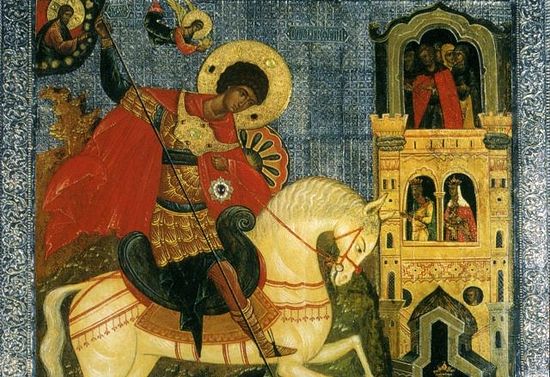
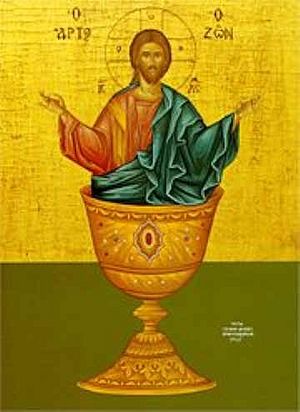
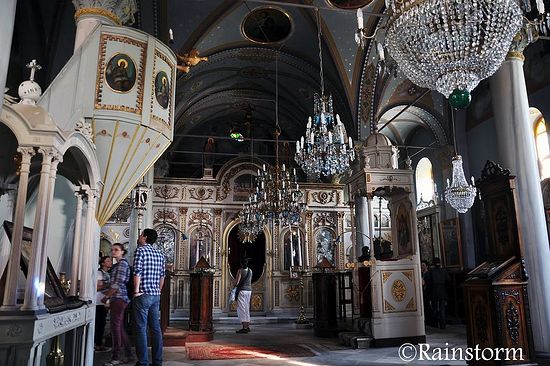
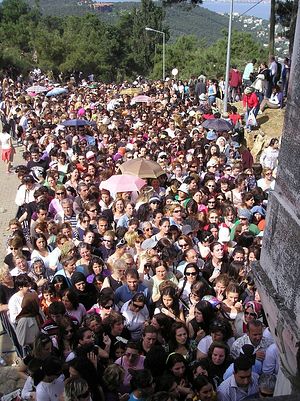
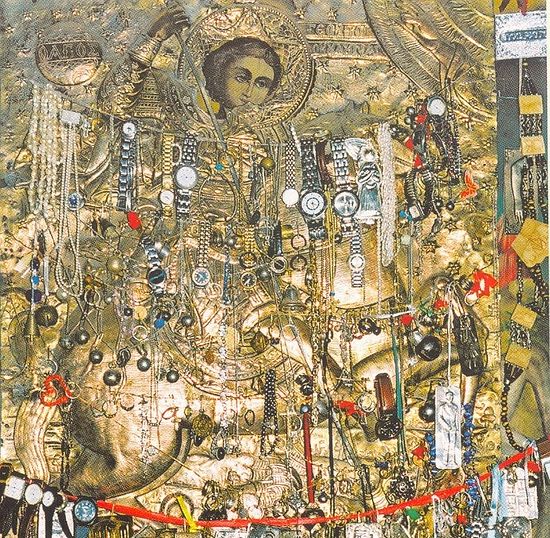
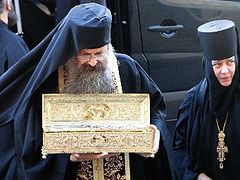
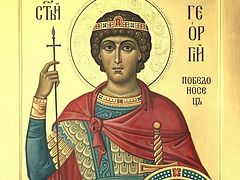
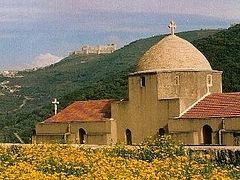
St. George pray to God for us.